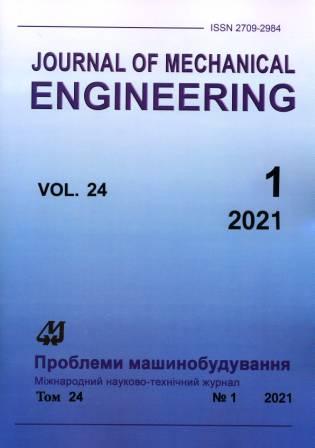Electrochemical and Chemical Mechanisms of the Erosion-Corrosion Process of Wet-Steam Turbine Rotor Blades Destruction Under the Influence of Electrified Moisture
Abstract
This paper is devoted to the electrochemical and chemical aspects of the erosion-corrosion destruction of the surface layer of a wet-steam turbine rotor blade under the influence of an electrified working fluid. It considers a hypothesis about a complex mechanochemical-electrochemical mechanism of chromium and iron wash-out from the surface layer of the rotor blade metal during the destruction of the oxide film under the influence of a high-speed wet steam flow. Various versions of this process are analyzed for positive, negative, quasi-neutral, and neutral electrifications of wet steam. The possibility to hydrogenate the surfaces of rotor blades under the influence of negatively-charged droplets is shown theoretically. The damage to the blades in this case is similar to that from anodic etching. It is also shown that the process of blade surface hydrogenation takes place in any case both for electrically-charged droplets and for neutral ones. However, in the case of neutral droplets, the intensity of the process is insignificant. An experimental study was carried out for the erosion-damaged surface of a last-stage rotor blade from of the BK-50 LMP turbine that had exhausted its lifetime. The quantitative content of chromium was determined in the steel sample cut out from the blade. A decrease in chromium content in the erosion-damaged blade surface layer was found. To test the hypothesis about the similarity between the process of anodic electro-etching and the process of surface destruction under the influence of negatively-charged droplets, an electrochemical experiment was carried out on a model sample of 20X13 chromium steel. The reliefs of the damaged areas on the model sample after anodic etching and on the observable blade in the zone of exposure to negatively-charged droplets are shown to be similar. The experimental studies have confirmed the presence of a complex mechanochemical-electrochemical process of blade destruction. On the basis of the data obtained, recommendations for extending the useful life of turbine blades are formulated.
Downloads
Published
Issue
Section
License
Copyright (c) 2021 А. А. Тарелин, В. Л. Швецов, В. Г. Михайленко, А. В. Нечаев, А. Е. Хиневич

This work is licensed under a Creative Commons Attribution-NoDerivatives 4.0 International License.
All authors agree with the following conditions:
- The authors reserve the right to claim authorship of their work and transfer to the journal the right of first publication of the work under the license agreement (the agreement).
- Authors have a right to conclude independently additional agreement on non-exclusive spreading the work in the form in which it was published by the jpurnal (for example, to place the work in institution repository or to publish as a part of a monograph), providing a link to the first publication of the work in this journal.
- Journal policy allows authors to place the manuscript in the Internet (for example, in the institution repository or on a personal web sites) both before its submission to the editorial board and during its editorial processing, as this ensures the productive scientific discussion and impact positively on the efficiency and dynamics of citation of published work (see The Effect of Open Access).

